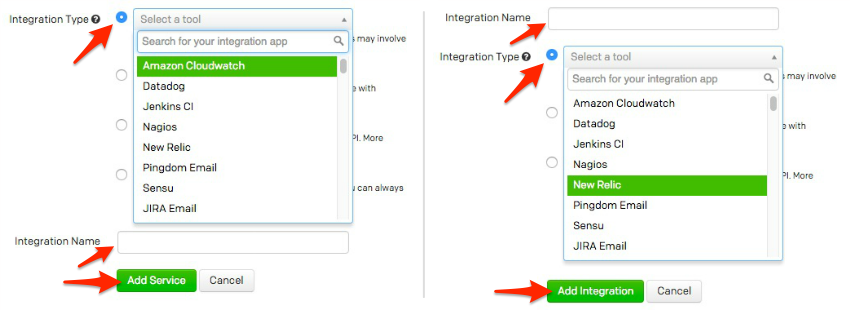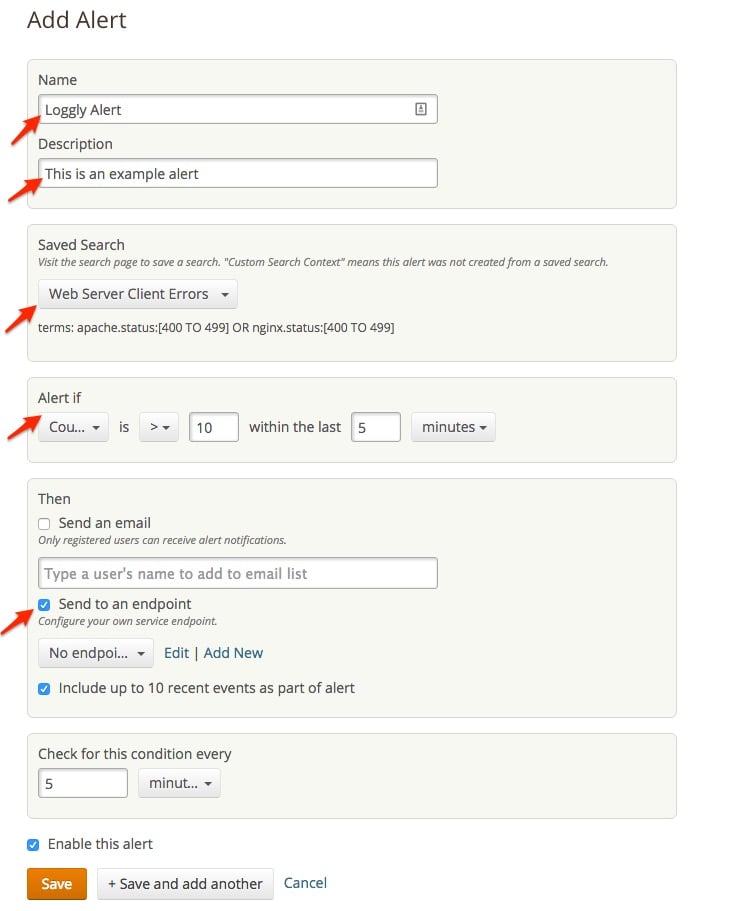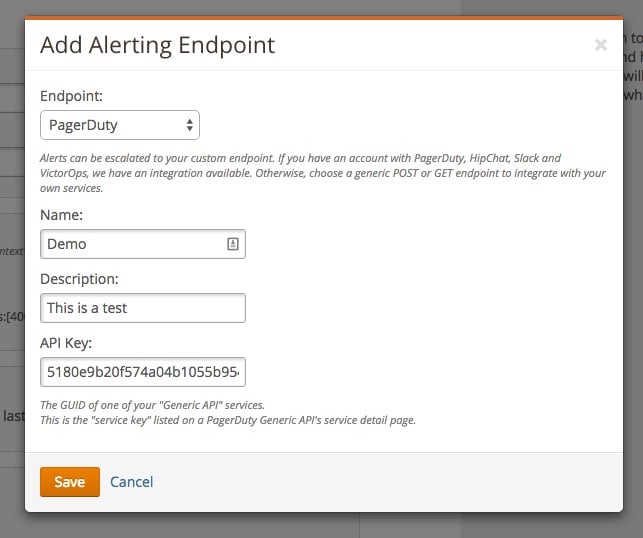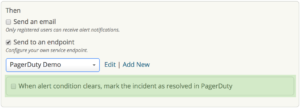Start Using PagerDuty Today
Try PagerDuty free for 14 days — no credit card required.
Loggly is the world’s most popular cloud-based log management service. It aggregates logs across your entire infrastructure and provides a single interface to search, isolate the root cause of problems, and monitor trends. An alert fired in Loggly can be sent to PagerDuty, which will then alert the appropriate technician via SMS, phone, email, or iOS push.


Click the Alerts button at the top of the Loggly page.
Click Add New to create a new alert.
Enter the alert name, the criteria for the alert such as a Loggly saved search, and the threshold that determines when you want the alert to fire.
In the Then section, click the checkbox for Send To An Endpoint.
Click Add New to create a new alert endpoint
Select PagerDuty in the dropdown box.
Enter in the name of the endpoint and a description.
Enter in the Integration Key you copied from PagerDuty in the PagerDuty Step #3.

Press Save to create the endpoint, then Save again to save the alert.
If you want to create additional alerts using the same PagerDuty endpoint, just select the existing endpoint in the dropdown box on Loggly’s Alert setup page.
You can verify that they are communicating by triggering a test alert.
Click on the name of the alert to edit the configuration.
Set the threshold to something that is guaranteed to fire, such as setting it to < 1. Save the alert when you’re done.
Wait at least 5 minutes for the alert to run and fire.
Log in to your PagerDuty account.
Click on Services and then select the service that’s used for monitoring Loggly.
You should see that an incident has been triggered.
Now that you have verified that it’s working, go back and reset your threshold criteria to the original value you want your alert to fire on.
Yes, you can optionally configure Loggly to resolve PagerDuty incidents when an alert condition clears.

Once you have two Loggly/Generic API services within PagerDuty, create a new alert within Loggly. When configuring the alert endpoint, use the Service API Key from the second PagerDuty service.
If you are having trouble completing the installation, please contact our support.
Try PagerDuty free for 14 days — no credit card required.